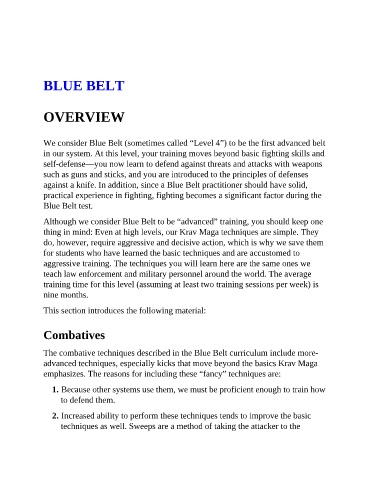Page 539 - Complete Krav maga : the ultimate guide to over 250 self-defense and combative techniques
P. 539
BLUE BELT
OVERVIEW
We consider Blue Belt (sometimes called “Level 4”) to be the first advanced belt
in our system. At this level, your training moves beyond basic fighting skills and
self-defense—you now learn to defend against threats and attacks with weapons
such as guns and sticks, and you are introduced to the principles of defenses
against a knife. In addition, since a Blue Belt practitioner should have solid,
practical experience in fighting, fighting becomes a significant factor during the
Blue Belt test.
Although we consider Blue Belt to be “advanced” training, you should keep one
thing in mind: Even at high levels, our Krav Maga techniques are simple. They
do, however, require aggressive and decisive action, which is why we save them
for students who have learned the basic techniques and are accustomed to
aggressive training. The techniques you will learn here are the same ones we
teach law enforcement and military personnel around the world. The average
training time for this level (assuming at least two training sessions per week) is
nine months.
This section introduces the following material:
Combatives
The combative techniques described in the Blue Belt curriculum include more-
advanced techniques, especially kicks that move beyond the basics Krav Maga
emphasizes. The reasons for including these “fancy” techniques are:
1. Because other systems use them, we must be proficient enough to train how
to defend them.
2. Increased ability to perform these techniques tends to improve the basic
techniques as well. Sweeps are a method of taking the attacker to the

